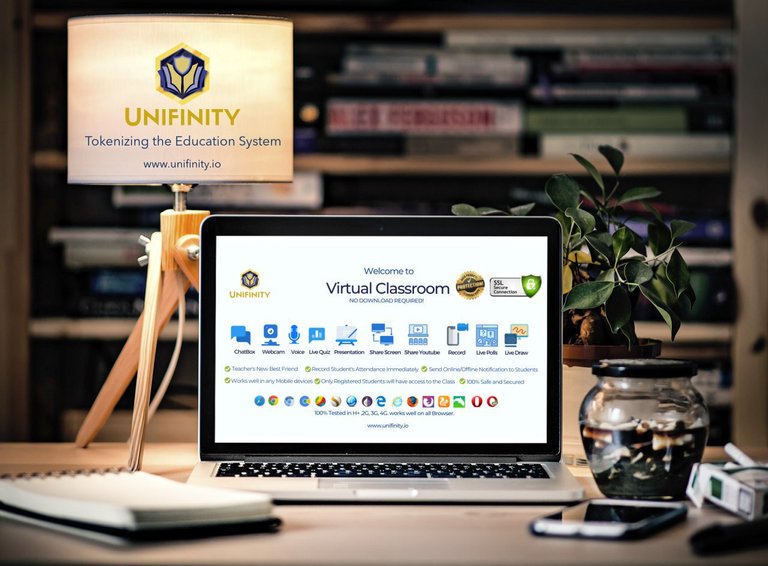
Introduction
Blockchain has become one of the most recognizable emerging technologies over the last decade. This is due in part to the immense popularity of bitcoin that has become a viable alternative to the prevalent centralized financial structures we have today.
Its success in disrupting such a powerful industry has titillated the curiosity of many early adopters and innovators. This eventually led to the development and use of blockchain in various industries beyond its initial purpose.

Education Industry
One industry that has yet to leverage the advantages of blockchain technology is the education sector. Many educational institutions from around the world have expressed enthusiasm and interest in blockchain but very few have integrated this technology into their systems. Financial constraints, unavailable IT infrastructure, and lack of technical know-how have been major barriers to entry to many of them.
Fortunately, a multinational software development company is currently creating a platform that will enable schools and universities to leverage blockchain. Unifinity aims to create the first blockchain-based decentralized application (Dapp) built to enhance security, operational efficiency, cost-effectiveness, and transparency in the entire value chain of educational institutions. According to Unifinity’s whitepaper, they will deliver these benefits at a fraction of the cost of legacy systems as well as in the most timely manner.
Before we delve into Unifinity’s platform, let’s make a quick detour and learn more about blockchain.
What is Blockchain Technology?
To get a better understanding of the benefits of blockchain technology we have to understand what blockchain is and what makes it so revolutionary and valuable.
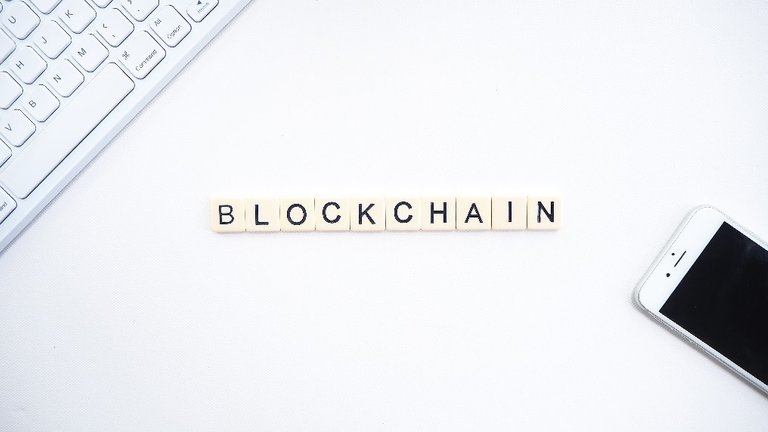
First approach: think of it as a database
We define blockchain as a trustworthy decentralized database that incorporates a consensus mechanism to establish immutable truths. Unlike regular databases, no single entity can alter, reverse, or stop transactions in a blockchain.
Furthermore, data is only recorded if the majority of the participants in the network are in agreement that the data is admissible. Once data is recorded it cannot be deleted or modified. The only way to correct errors is by making another transaction that updates the previous data entry.

In addition, a copy of the most recent, updated, and validated version of the blockchain is distributed throughout the entire decentralized network. This is done each and every time a new data is recorded in the blockchain.
Hence, creating a robust, effective, and transparent “paper trail” that is accessible to any participant in the network. This also serves redundancy to protect it from a single point of failure. This makes blockchain more secure from external and internal threats than traditional databases.
Second approach: think of it as a public ledger
We can also define blockchain as an open public ledger. A ledger is just a compilation of time-stamped transaction journals. They are tools by which one can determine the ownership of an asset at any point in time. Being as such anyone has a chance to write on this public ledger and the information written on it is available for public scrutiny.
Since the validity and value of ledgers stem from the truthfulness of the data or transactions recorded on it, a consensus is required before any information is included. Subsequently, the updated ledger is then replicated and distributed in the entire network ensuring that all participants have the same updated version.

Anyone who wants to check the transactions on this public ledger can easily do so by using blockchain explorers. This provides a simple yet powerful way to verify the status of all transactions in the blockchain. It offers unprecedented transparency in transactions, empowering regular users to check for themselves unadulterated real-time information on transactions.
The net effect is a more trustworthy record of transactions which can serve as irrefutable proof of events that actually happened.
The value of Blockchain technology
It is not hard to see that we are increasingly leaning towards digitization of virtually every human interaction. This has been the common trend for several years now and the success of the various social media outlets, e-commerce, and entertainment sites stand as proof of this phenomenon.

Furthermore, macro socio-economic events, as well as the on-going COVID-19 pandemic, will further accelerate the digitization of social interaction. As more people move away from physical interactions and pivots towards virtual environments the need for a safe, secure, and trustworthy platform will continue to grow.
However, a major challenge in these interactions is establishing trust between transacting parties. In order to do this, we have predominantly relied on intermediaries who become trusted entities to ensure that these parties behave exactly how they are supposed to be.
Problems with intermediaries
This only works if the intermediary does not act against the interest of any of the transacting parties. But we all know too well that many of these seemingly trustworthy organizations exploit user data of their customers selling them to interested companies or utilize them for target marketing or even social engineering.
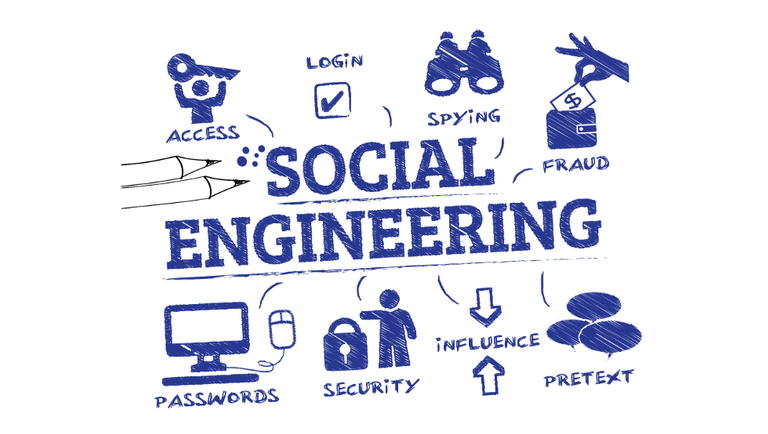
They also become honey pots or treasure troves of valuable private data that hackers steal to be sold on the dark web. Data that can be used to commit fraud or to have access to one’s financial information (credit/debit card numbers or information to have access to bank accounts and digital wallets).
Many users fall prey to thinking that these services are free, when in fact they are paying them with their own private information and data. Information that can spell disaster legally and financially if it were to fall in the wrong hands. Sadly, this type of arrangement persists and will continue to do so not unless we find a better solution. This is where blockchain technology comes in.
Blockchain is codified trust
For the first time in human history, we are able to encapsulate in computer code “trust” or a way to establish “trust.” This enables blockchain developers to create systems where users need not trust counterparties or rely on intermediaries to secure transactions. It cuts out the middlemen making transactions more efficient, free-flowing, and cost less.

But more importantly, blockchain technology enables transactions to be more transparent, censorship-resistant, unstoppable, immutable, and tamper-proof. Transactions that even the developers themselves are not able to reverse or modify without majority agreement of all participants. On top of this, old transactions cannot be erased but can be updated only through a new transaction which again needs to reach consensus prior to being included in the blockchain.
A complete, updated, and verified copy of the blockchain is then propagated through the network each time a new data is added into it. This ensures that everyone in the network always gets the latest version while at the same time making it more secure and less susceptible to a single point of failure.
Disintermediation
Blockchain has the potential to disrupt whole industries due to disintermediation or in lay man’s terms “cutting out the middlemen.” This is perhaps the single most exciting part of blockchain technology, as in many cases, this technology replaces a cascade of middlemen with one system that facilitates the direct interactions of users within a computer network.
Strictly speaking, blockchain does not remove the middlemen’s role in the interaction of users, instead, it replaces them as a digital, trustworthy, and incorruptible middleman that always follows the rules (Smart contracts) of the transactions. The innovation here is replacing trust in human organizations with coded trust.

Finally, aside from the obvious economic and operational advantages of disintermediation, there is a more profound effect of the removal of the middlemen. Many of these trusted 3rd parties become exclusive gatekeepers of truth or trustees of user’s digital assets (data, information, financial assets). Their removal will usher in a new era of decentralized systems and applications that is more inclusive, fairer, and safer.
Introducing Unifinity
Unifinity Limited is the company behind the Unifinity platform. It is headquartered in Seychelles with affiliate companies in Asia, Europe, and Africa. The project is founded by a group of professionals with extensive knowledge of blockchain technology as well as other allied industries. Their expertise in blockchain technology and complementary technologies allows them to develop blockchain-based solutions that will enhance the education system.
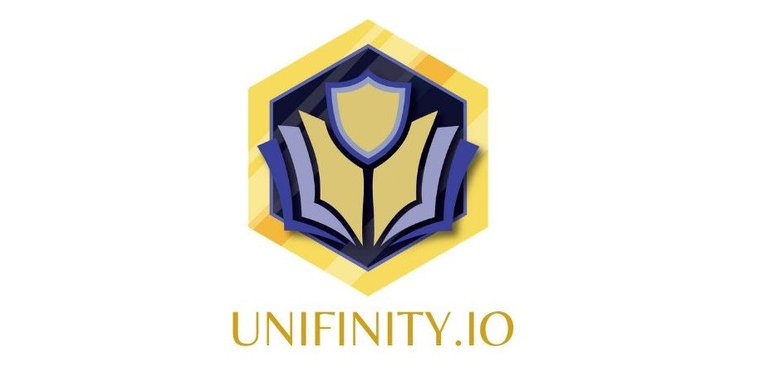
The Unifinity platform will provide educational institutions the infrastructure to access Unifinity’s blockchain-based services and its integrated tools. This will enable schools and universities to manage blockchain features and applications without spending too much time and money developing their own proprietary blockchain solution. More importantly, Unifinity will provide the required technical support to optimize the benefits of blockchain-based solutions.
The Unique Value proposition of Unifinity
The Unifinity team believes that blockchain technology will play a pivotal role in the improvement of the education and learning management systems schools have today. However, they also recognize that many schools have not yet integrated high-tech automation tools as most of these systems are too expensive and complicated to implement and use.
As a result many institutions are still using highly inefficient and time-consuming manual processes. This situation creates inefficiencies throughout the school’s ecosystem. From long waiting lines during enrollments, difficulty in real-time tracking of student progression, accounting errors, as well as inefficiencies in services graduates may require when they enter the workforce or pursue higher education.

Unifinity aims to offer a comprehensive blockchain-based solution designed specifically for schools and universities to enhance their administrative processes without breaking the bank. Aside from this, this new revolutionary platform will also allow parents, students, school management, and other organizations to have access (with proper permissions) to all relevant data, enabling them to connect with all blockchain innovation partners, services, and processes.
The developers of Unifinity will be able to do this by leveraging the types of records that can be stored in Blockchains which can be categorized into three: Asset transactions, Smart Contracts, and digital signatures and certificates.
Asset transactions represent the movement of anything that has value, it can in the form of currencies or documentary evidence of ownership rights legally known as title deeds. This is the type of data Blockchain was initially known for proven by bitcoin’s massive success.
Smart contracts are written code stored in a blockchain. Unlike regular contracts, these contracts do not require parties to execute them, instead, they are self-executing. Since they are stored in a blockchain it makes them unstoppable and irreversible.
Furthermore, blockchains can store digital signatures and certificates by storing cryptographic hashes which act as digital fingerprints, making blockchains the perfect infrastructure for public certificate registry.
How will Unifinity enhance education?
Blockchain is digitized truth, hence it is applicable in any digital process where parties are required to trust each other. By utilizing this emerging technology Unifinity plans to disrupt the education system through the following innovative use cases:
Securing Diplomas and Certificates
Schools and universities will benefit from blockchain technology by enabling them to secure digital diplomas and certificates of students. Digital signatures associated with these diplomas and certificates will be stored in a blockchain, securing them and making them permanent. Even if the school closes down, interested parties who want to verify their existence will be able to do so by validating them through the blockchain.

Unique digitally signed certificates and diplomas will be given directly to students. Verifying the authenticity of the certificate will only require comparison with the digital signature or cryptographic hash stored on the blockchain. This means once certificates and diplomas are issued, educational institutions will not have to spend any further resources to confirm their validity.
Self-Sovereign Identity
Unifinity’s platform will enable students to become the final arbiter of who can access and use their data and personal information. This will empower them to own and manage their credentials without having to rely on educational institutions as a trusted intermediary. Educational Institutions will benefit by relieving them of the burden of securing private information of students that might be a source for external and internal security risks.
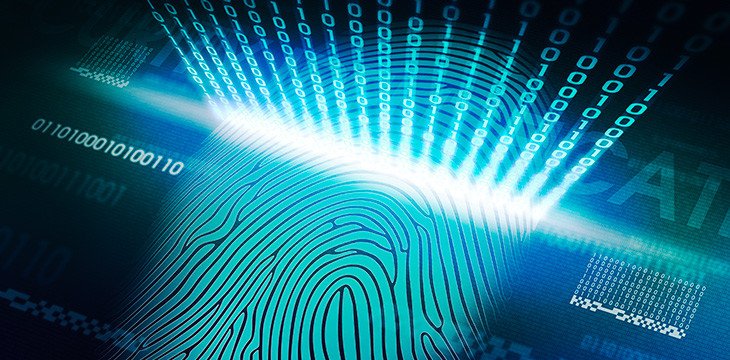
With self-sovereign identity, students need not share their private information protecting them from handing over their valuable data. Sharing private information is tantamount of handing over control of one’s own data. In short Unifinity’s platform will allow students to certify their identity without the need to share the underlying data that constitutes the identity.
Blockchain-based Payment Options
In its current form, traditional financial institutions are not always accessible to students. Most of the time, the requirements to avail of financial services from these institutions require a tremendous amount of time and effort to comply. Even so, access to financial services will be limited given the student’s age and employment status.
Sometimes this could add additional barriers to access education. This is especially true for cross-border studies when students are dealing with multiple fiat currencies. Value transfer is not only expensive but inefficient where intermediaries add on their margins and take time to settle.

This will not happen with blockchain-based payment systems. Cryptocurrencies have proven to be a faster, cheaper, safer, and more accessible alternative financial mechanism. There are no bank holidays on crypto, no intermediaries with additional fees and senders (parents or patrons) will be able to monitor real-time information about the movement of their money. It also introduces new dynamics to how students can get funding for their education.
New ways to Fund Student’s Education
Blockchain technology was designed as a secure and robust value transfer network. It has enabled existing IT infrastructure like the internet to evolve from a network that acts as a conduit of information into one that facilitates effective and safe value transfer. Many believe that in the next evolution of the internet, it will evolve into a network of value transfer powered by the first digital public infrastructure that facilitates value exchange, cryptocurrencies.

Donors, patrons, and educational grant organizations will have various and innovative means to provide funding for student’s education. Blockchain-based tools (digital signatures, blockchain explorers, and smart contracts) will allow them to verify that grants and donations go to intended recipients.
Education institutions will have the ability to use Unifinity tokens for grants or voucher-based funder to help deserving students who may not have the financial capacity to pay for their education. Smart contract-powered vouchers can be programmed to release tranches of funding to either the student or the educational institution when certain hardcoded conditions are met. This will be self-executing, cutting through the inefficiencies of bureaucracies within the educational institution.
Incentivization and Rewards Mechanism
One of the most exciting features for students that will be integrated into Unifinity’s platform is the innovative ways students will be rewarded and incentivized to perform well in school. Dream Planner Portal serves as an incentivization and rewards mechanism where donors, sponsors, school supporters (alumni, PTA organizations, NGOs, scholarships and etc) and future employers can help students reach their full potential.

While quality education and performing well in school give students higher chances of success in the future, which are rewards in itself, many students do not fully grasp this concept. “Chance” is after all not a guarantee that success will certainly follow. In a world where instant gratification is becoming a norm, real-time incentivization and rewards mechanisms like this might prove to be invaluable tools to help students excel in school.
Attending classes, adding new skills, acing exams, participating in extracurricular activities, or maintaining a grade average can be some of the basis for students to get rewarded. School administrators, parents, and patrons can configure how rewards are released which will be executed on-chain (execute through smart contracts).
Conclusion
Like many other industries, the education sector can immensely benefit from adopting blockchain technology. Looking into Unifinity, one of the most promising blockchain projects seeking to enhance the education system, gave us a glimpse of the future role of this emerging technology in this industry. However, it must be noted the technology itself (blockchain technology) and the Unifinity platform are currently in their early phase of development.
Many pundits believe that we have barely scratched the surface of the real potential of this emerging technology and they might be correct on their assessment. There are still a lot of technical and regulatory issues that have yet to be resolved in the space. This is one of the reasons why blockchain technology has not yet reached mass adoption despite the enormous benefits it offers.
On the brighter side, blockchain developers are continuously innovating and slowly but surely have been addressing many of the technical challenges (scalability and interoperability) this emerging tech is currently facing. Moreover, more jurisdictions are beginning to provide regulatory clarity for this technology and its implementations. In fact in some countries it has been considered as one of the technological pillars that will usher in the 4th industrial revolution.
Zeroing in the education sector, early evaluation of Unifinity reveals that blockchain technology indeed has the capacity to enhance many aspects of the education system. Many of the essential ones are already integrated into Unifinity’s platform and it won’t be a surprise if many more processes will be added in the future as the project progresses.
Some of the interesting features (as suggested by the Joint Research Centre) that hopefully get included are:
- Blockchain-based automatic recognition and transfer of credits. Helpful when students are changing their field of study or cross-registering to other schools or universities.
- Blockchain-based accreditation of schools. This will streamline verifying the legitimacy of accreditation claims of many learning institutions.
- Blockchain-based tracking and rewarding of intellectual property. Students and teachers retain ownership of their school work or teaching materials. It also provides means to get rewarded based on use or citations
- Blockchain-based lifelong learning passport. (This is not to be confused with Cambridge, Microsoft and Unicef’s initiative dubbed as Learning Passport). This functionality is the extension of storing student’s learning credentials. It takes on the form of a verifiable CV that contains all learning and employment records.
Only time will tell if blockchain-based solutions like Unifinity will be a success or not. But one thing is sure, visionaries in blockchain technology will continue to explore the potential of this nascent industry and will continue to innovate to address the many challenges of our rapidly changing times. This technology has already proven itself in perhaps the most powerful and influential industry. How long do you think it would take before this will disrupt the education sector?
Finally, as institutions that would help mold future leaders and responsible citizens of the world, it would be of great disservice to themselves and to their students if no effort to leverage this technology. A technology that might as well help establish the new norm in all human social interaction amidst the clear and present risks of our times.
Official Channels
Resources
https://unsplash.com/photos/zFSo6bnZJTw
https://unsplash.com/photos/h5iazR-wljU
https://www.cbronline.com/what-is/what-is-a-database-4917209/
https://unsplash.com/photos/smgTvepind4
https://unsplash.com/photos/5fNmWej4tAA
https://www.security7.net/news/what-is-a-social-engineering-attack
https://unsplash.com/photos/xekxE_VR0Ec
https://theprint.in/opinion/profit-making-and-commercial-biases-influence-news-feeds-on-google-facebook-and-twitter/111937/
https://unsplash.com/photos/2W32pAOwFEk
https://coingeek.com/catalonia-developing-blockchain-based-identity-platform/
https://ec.europa.eu/info/departments/joint-research-centre_en
Long long long blog!
Revive!
Congratulations @ankarlie! You received a personal badge!
You can view your badges on your board And compare to others on the Ranking
Do not miss the last post from @hivebuzz:
Support the HiveBuzz project. Vote for our proposal!